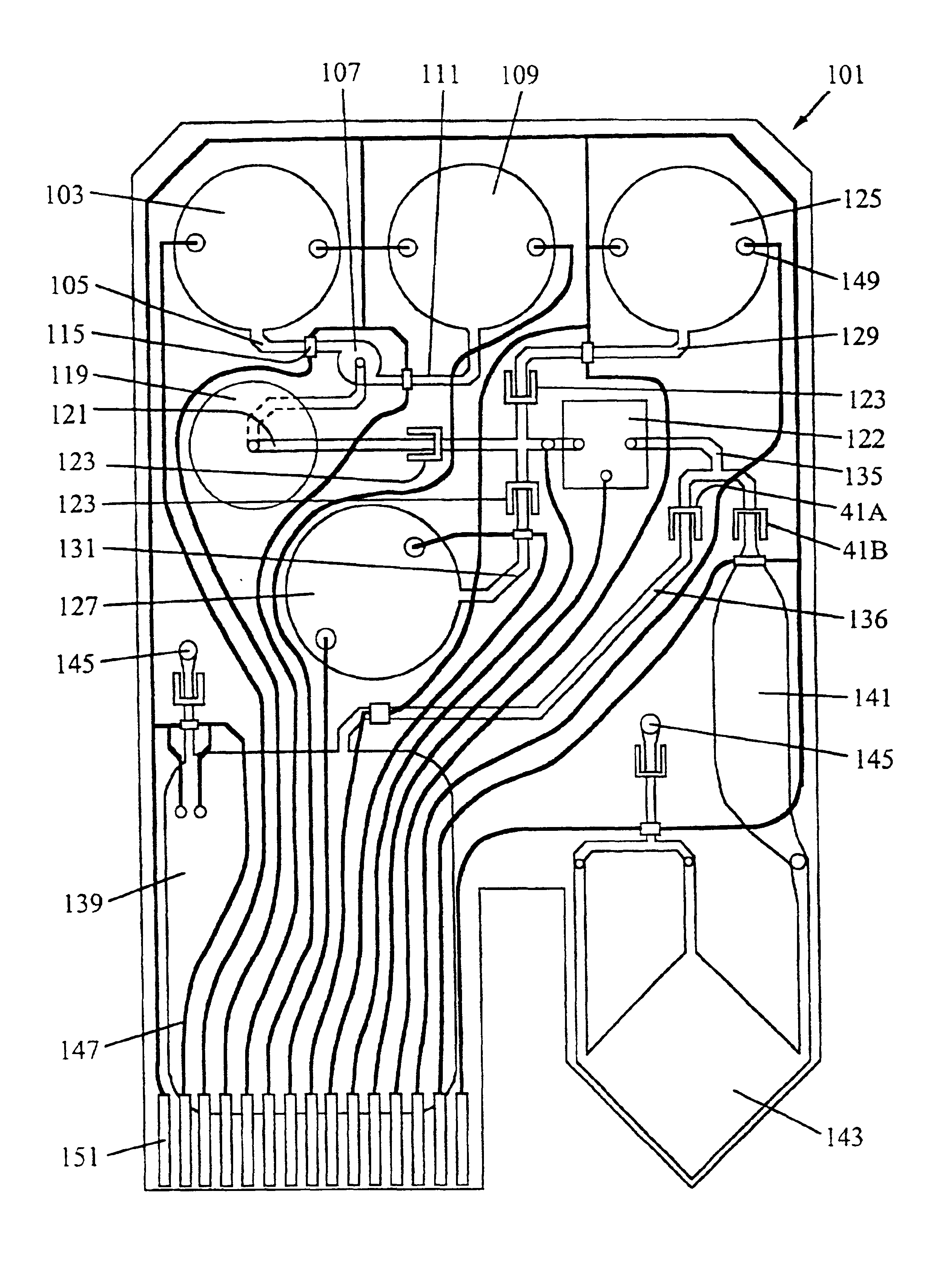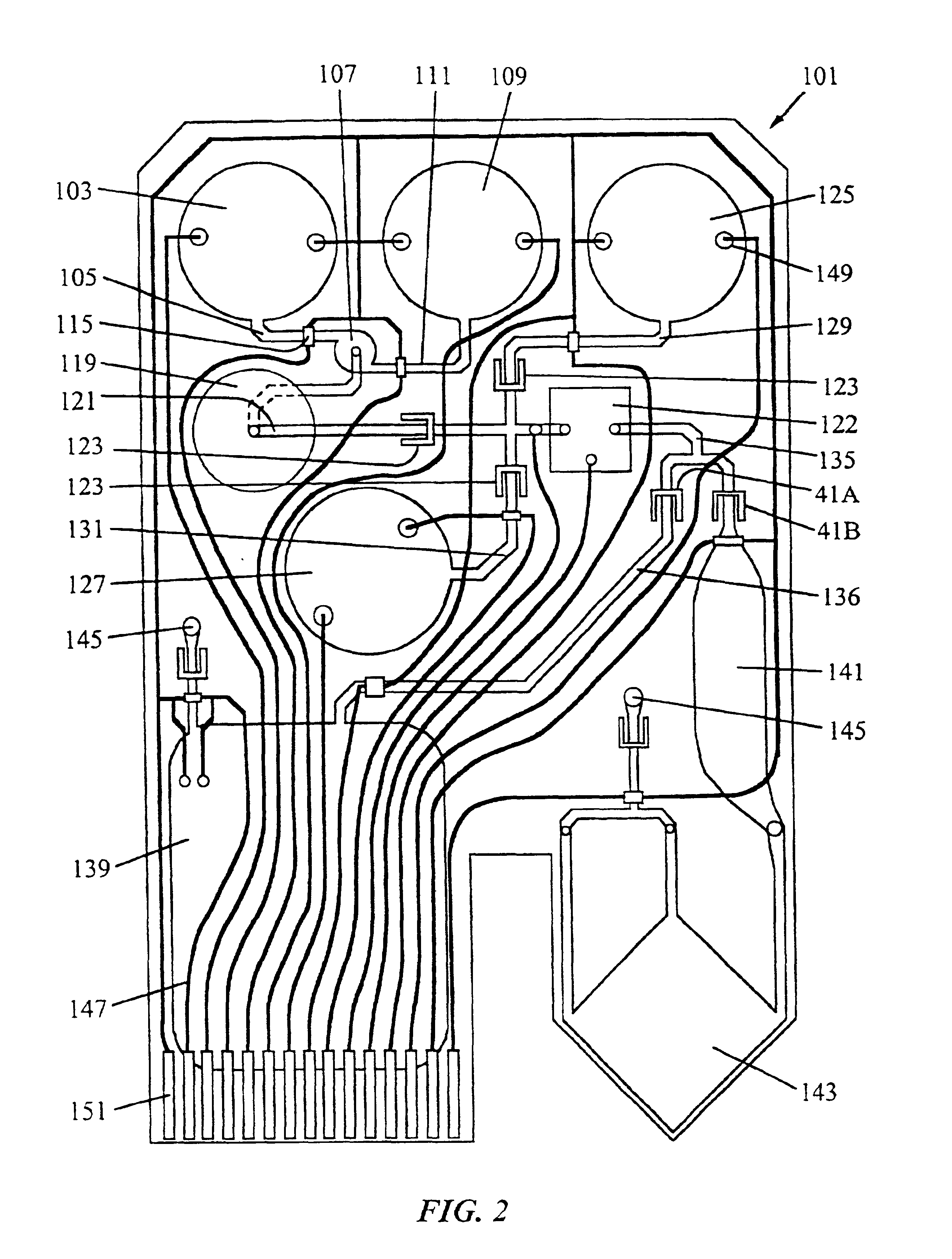Method for separating analyte from a sample
a technology of analyte and sample, applied in the field of method for separating analyte from a sample, can solve the problems of complex fluidic assembly processing algorithms, limited volume of fluid sample which can be processed, and complex contemporary biomedical processing instruments. achieve the effect of increasing the elution efficiency
- Summary
- Abstract
- Description
- Claims
- Application Information
AI Technical Summary
Benefits of technology
Problems solved by technology
Method used
Image
Examples
Embodiment Construction
[0040]The cartridges of the present invention allow for significantly improved processing of a fluid sample for the detection and / or analysis of chemical components in the sample, such as biological molecules. The cartridges may also be designed to automatically conduct processes, such as mixing reagents with the fluid sample, lysing, filtering, and introducing the mixture into a reaction chamber or separate reaction vessel appropriate for further processing, e.g., detection or amplification of the analyte.
[0041]Since the operations on the fluid sample are performed on the sample stream as it flows through the various regions of the cartridge, any incorporated microfluidic processing chip or other component can be very small, as much as one hundred times smaller than with the bolus-oriented approach. This allows the entire processing facility to be small, yet capable of processing relatively large fluid samples (e.g., 0.1 to 10 mL), and thus to take advantage of the unique propertie...
PUM
| Property | Measurement | Unit |
|---|---|---|
| volume | aaaaa | aaaaa |
| volume | aaaaa | aaaaa |
| flow rate | aaaaa | aaaaa |
Abstract
Description
Claims
Application Information
 Login to View More
Login to View More - R&D
- Intellectual Property
- Life Sciences
- Materials
- Tech Scout
- Unparalleled Data Quality
- Higher Quality Content
- 60% Fewer Hallucinations
Browse by: Latest US Patents, China's latest patents, Technical Efficacy Thesaurus, Application Domain, Technology Topic, Popular Technical Reports.
© 2025 PatSnap. All rights reserved.Legal|Privacy policy|Modern Slavery Act Transparency Statement|Sitemap|About US| Contact US: help@patsnap.com



